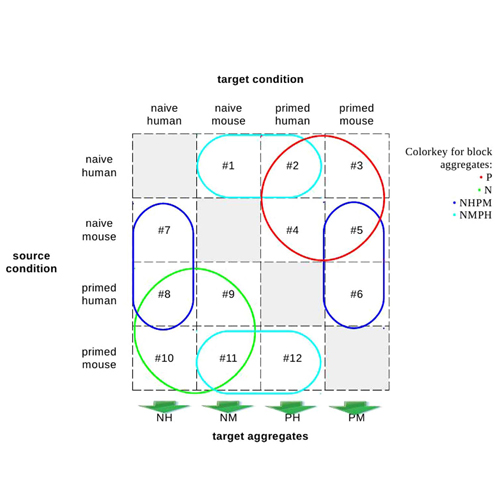Comparative computational analysis of pluripotency in human and mouse stem cells
21-Jan-2015
Scientific Reports, 2015, doi:10.1038/srep07927, 5, Article number: 7927 published on 21.01.2015
Scientific Reports, online article
Scientific Reports, online article
Pluripotent cells can be subdivided into two distinct states, the naïve and the primed state, the latter being further advanced on the path of differentiation. There are substantial differences in the regulation of pluripotency between human and mouse, and in humans only stem cells that resemble the primed state in mouse are readily available. Reprogramming of human stem cells into a more naïve-like state is an important research focus. Here, we developed a pipeline to reanalyze transcriptomics data sets that describe both states, naïve and primed pluripotency, in human and mouse. The pipeline consists of identifying regulated start-ups/shut-downs in terms of molecular interactions, followed by functional annotation of the genes involved and aggregation of results across conditions, yielding sets of mechanisms that are consistently regulated in transitions towards similar states of pluripotency. Our results suggest that one published protocol for naïve human cells gave rise to human cells that indeed share putative mechanisms with the prototypical naïve mouse pluripotent cells, such as DNA damage response and histone acetylation. However, cellular response and differentiation-related mechanisms are similar between the naïve human state and the primed mouse state, so the naïve human state did not fully reflect the naïve mouse state.











